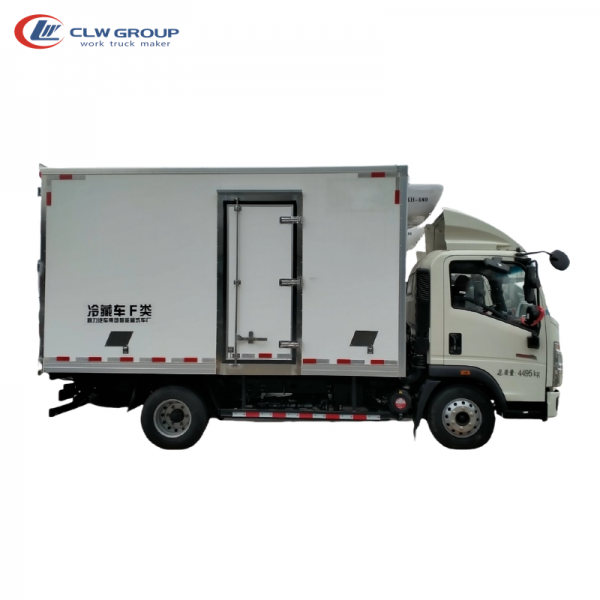Introduction:
Fuel trucks play a crucial role in the transportation of petroleum products, ensuring that gasoline, diesel, and other fuels reach their destinations safely and efficiently. One key aspect of fuel trucks that significantly impacts their performance and safety is the cab configuration. The design and layout of the cab can influence driver comfort, visibility, maneuverability, and overall operational efficiency. In this article, we will delve into the various fuel truck cab configurations available in the market, exploring their features, benefits, and considerations for fleet managers and drivers.
1. Standard Cab Configuration:
The most common cab configuration found in fuel trucks is the standard cab design. This configuration typically features a single cab that accommodates the driver and passenger, with the driver positioned centrally behind the steering wheel. Standard cab configurations are popular for their simplicity, ease of operation, and cost-effectiveness. They offer adequate space for the driver and passenger, along with essential amenities such as air conditioning, heating, and ergonomic seating.
Advantages of Standard Cab Configuration:
- Cost-effective compared to other cab configurations
- Simple layout and operation for drivers
- Adequate space for driver and passenger comfort
- Wide availability of standard cab models from various manufacturers
Considerations for Standard Cab Configuration:
- Limited visibility due to the single cab design
- Reduced maneuverability in tight spaces
- Potential for driver fatigue on long hauls due to limited space for movement
2. compressed garbage truck :
For fuel trucks that require additional seating capacity for transporting a crew of workers or supervisors, the crew cab configuration is an ideal choice. Crew cabs feature an extended cab area behind the driver and passenger seats, providing extra seating for up to four or more individuals. This configuration is commonly used in fuel trucks that require on-site supervision or team collaboration during fuel delivery operations.
Advantages of Crew Cab Configuration:
- Increased seating capacity for transporting crew members
- Enhanced collaboration and communication among team members
- Ideal for on-site supervision and coordination during fuel delivery
- Suitable for emergency response and disaster recovery scenarios
Considerations for Crew Cab Configuration:
- Longer wheelbase and overall vehicle length, which may impact maneuverability

- Additional weight from the extended cab area, affecting fuel efficiency
- Limited cargo space for fuel storage due to the extended cab design
3. Extended Cab Configuration:
Fuel trucks that prioritize cargo capacity and fuel storage often opt for the extended cab configuration. Extended cabs feature an elongated cab area that allows for additional storage space behind the driver and passenger seats. This configuration is popular among fuel transporters who need to maximize their payload capacity while maintaining driver comfort and safety.
Advantages of Extended Cab Configuration:
- Increased cargo capacity for transporting larger fuel loads
- Optimal balance between driver comfort and cargo space
- Suitable for long-haul fuel transportation routes
- Enhanced storage options for tools, equipment, and personal belongings
Considerations for Extended Cab Configuration:
- Potential reduction in maneuverability and turning radius
- Higher initial cost compared to standard cab configurations
- Limited visibility from the rear cab area, requiring additional safety measures
4. Custom Cab Configuration:
In some cases, fuel truck operators may require a custom cab configuration to meet specific operational needs or regulatory requirements. Custom cab configurations are tailored to the unique preferences and requirements of the fleet owner, incorporating specialized features, amenities, and safety enhancements. These configurations are often designed in collaboration with manufacturers and specialized vehicle outfitters to ensure optimal functionality and performance.
Advantages of Custom Cab Configuration:
- Tailored design to meet specific operational requirements
- Integration of advanced safety features and technologies
- Enhanced driver comfort and ergonomics
- Flexibility to accommodate specialized equipment or tools
Considerations for Custom Cab Configuration:
- Higher cost associated with customization and specialized features
- Longer lead times for design, fabrication, and delivery
- Potential challenges in sourcing replacement parts or servicing custom components
Conclusion:
Fuel truck cab configurations play a critical role in determining the efficiency, safety, and performance of fuel transportation operations. By understanding the various cab options available, fleet managers and drivers can make informed decisions that align with their operational needs and priorities. Whether opting for a standard, crew, extended, or custom cab configuration, it is essential to consider factors such as driver comfort, visibility, maneuverability, and cargo capacity. By selecting the right cab configuration, fuel truck operators can enhance productivity, safety, and customer satisfaction in the transportation of vital petroleum products.
